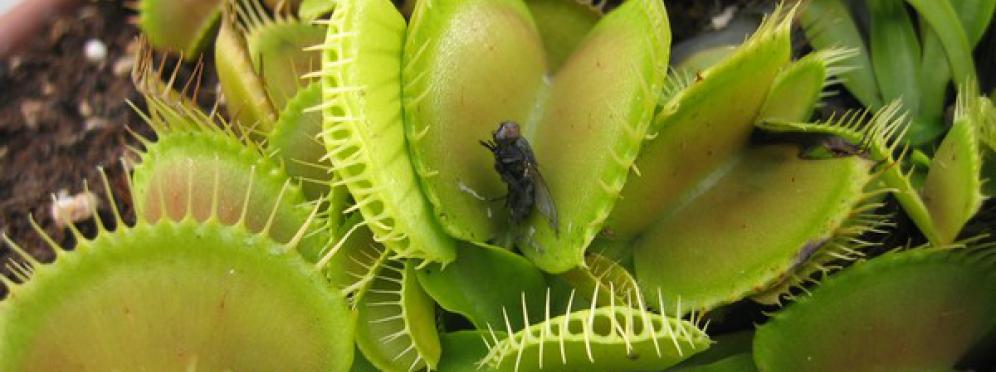Insectivorous plants
Insectivorous plants (often called carnivorous) carry out photosynthesis and colonise environments which lack nitrogen and minerals, and where competition with other plants is minimal.

Insectivorous plants (often called carnivorous) carry out photosynthesis and colonise environments which lack nitrogen and minerals, and where competition with other plants is minimal.
They integrate the deficiency of nutrients by using organic matter obtained from insects and small animals. They have therefore deeply modified the shape of their leaves, which are used to appeal, capture, and digest their prey and absorb the products of digestion. Their leaves are both active and passive traps, i.e., they move according to variations in the turgor of their cells.
Examples of active traps are the leaves of Venus' fly trap (Dionaea muscipula Ellis) which, in half a second, snap shut along their midline, as soon as six sensitive hairs on their surface are stimulated by prey.
Examples of passive traps are the leaves of sundew (Drosera sp.pl.), which are covered with gland-tipped hairs that exude a sticky, scented substance, rich in hydrolytic enzymes. Insects are attracted and trapped (fly-paper traps). Other passive traps are those of sarracenia and pitcher-plant (Sarracenia sp. pl., Nepenthes sp. pl.), the leaves of which are cupped (ascidium). The margins of the ascidia contain several glands exuding a sugary liquid that lures insects, which then fall inside (pitfall trap). The walls of the trap are smooth, covered with downward-pointing (retrorse) hair, to prevent prey from escaping. The bottom of the ascidium contains a liquor - a mixture of proteolytic enzymes and bacteria - which aids the digestion of prey.
These plants grow in the 19th-century greenhouse, beyond the north gate, along the greenhouse path, and are often seen in full bloom.






